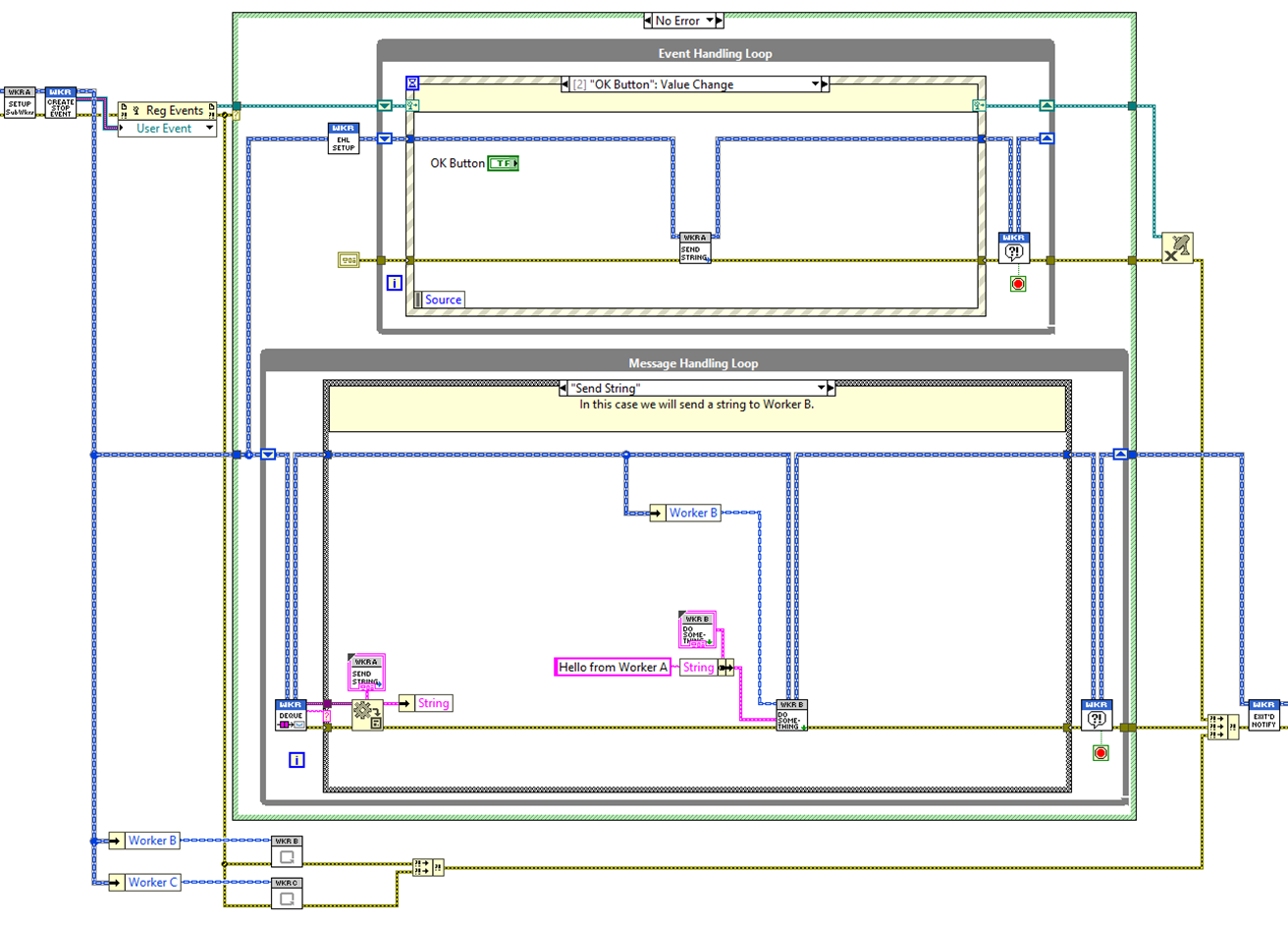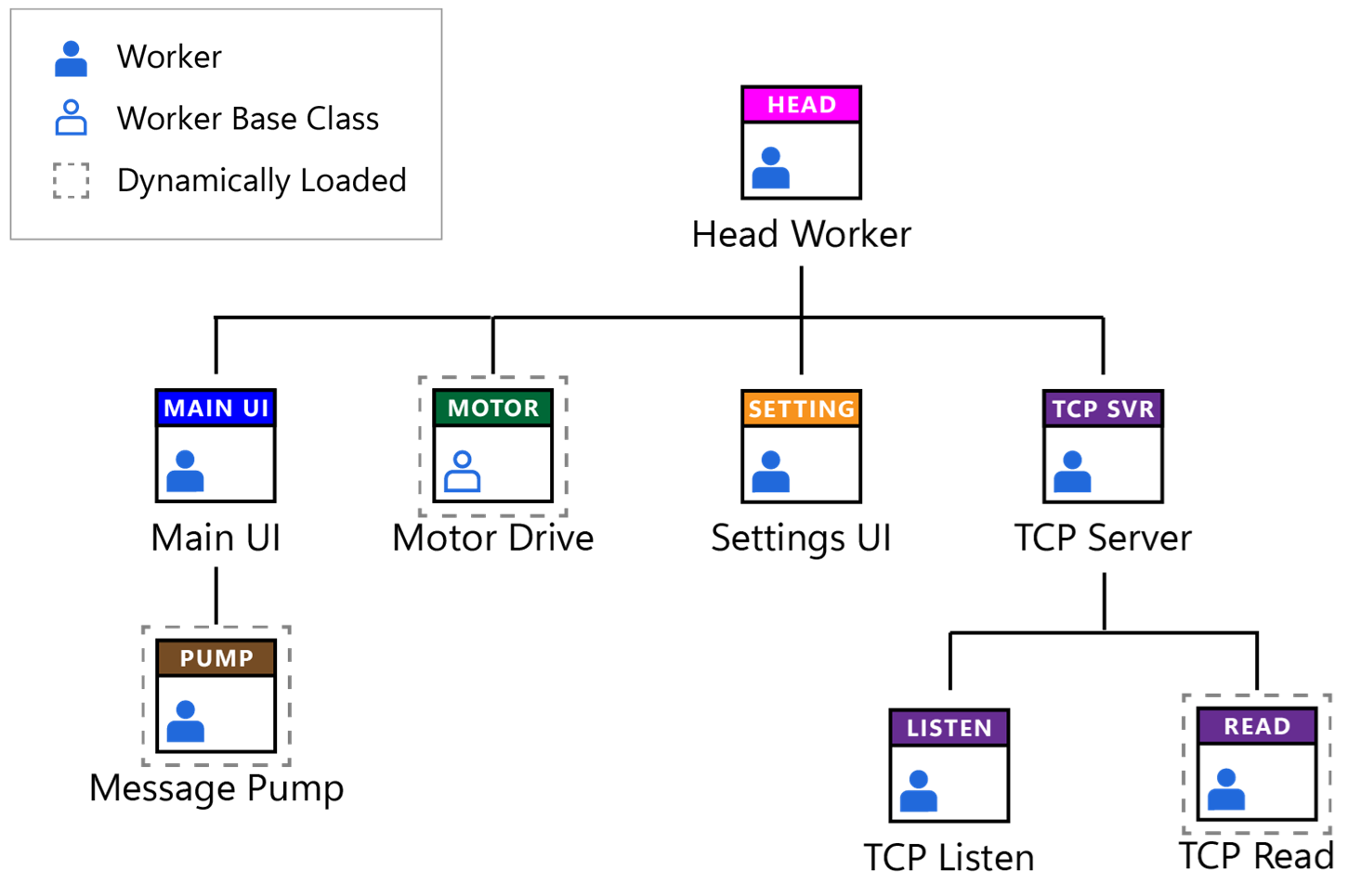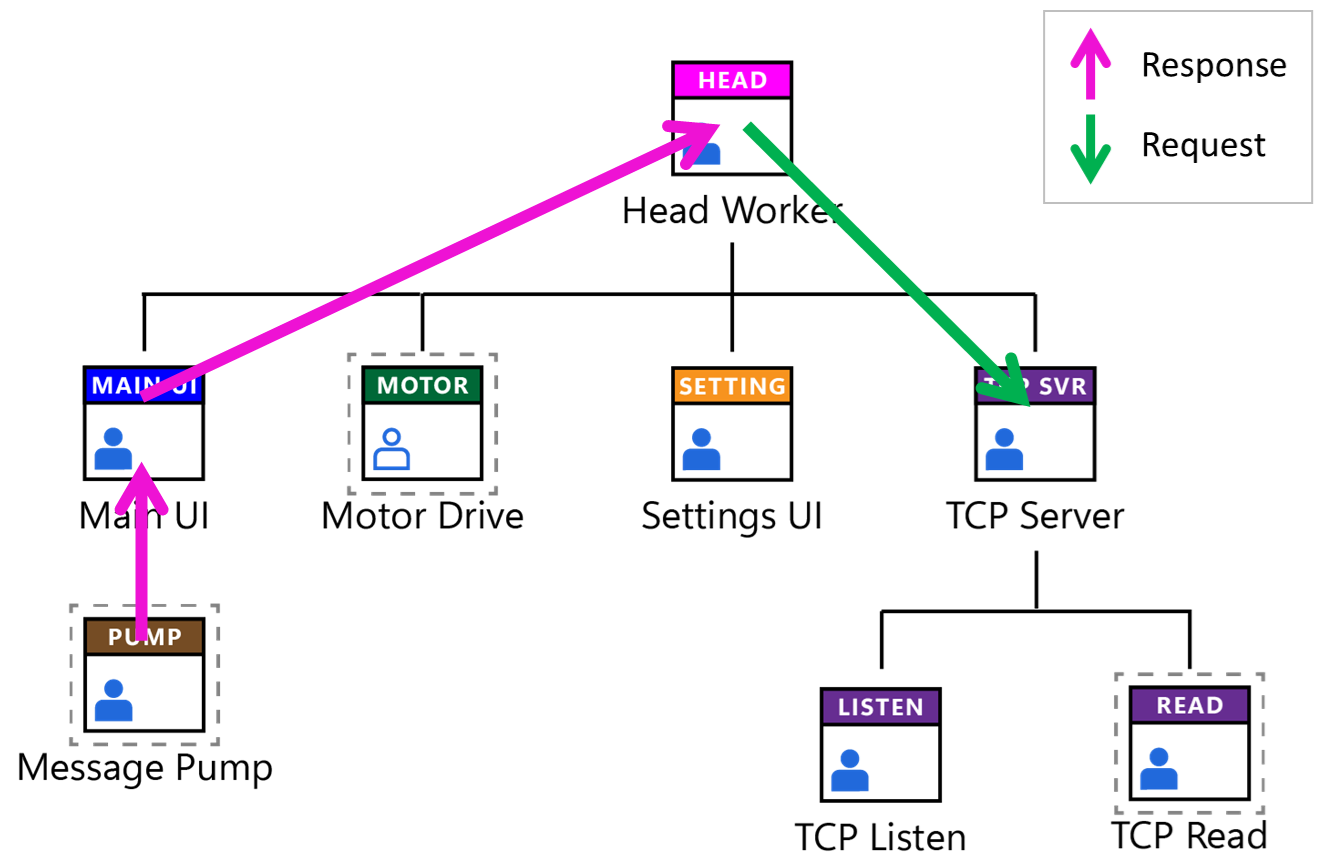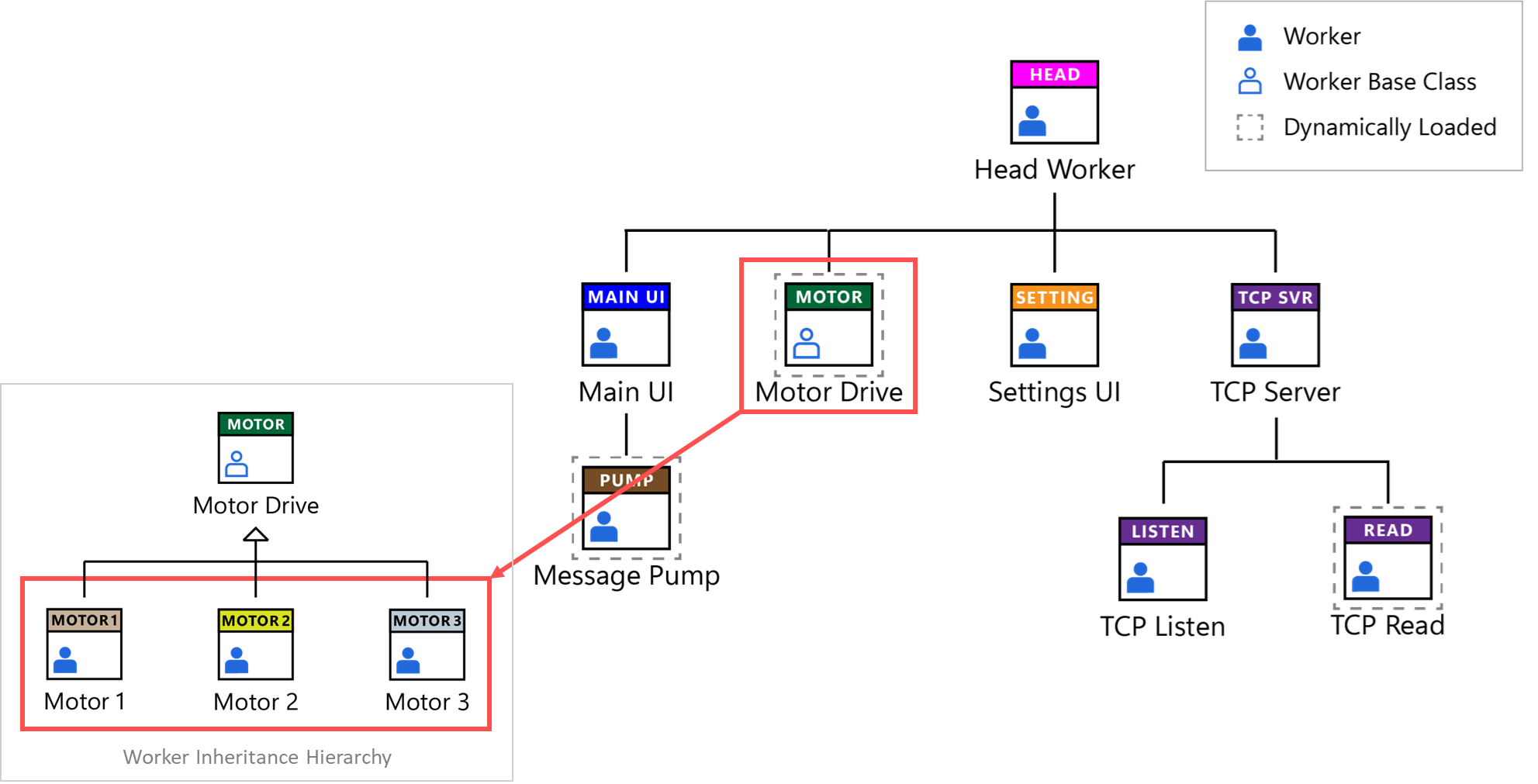Workers for LabVIEW is a powerful yet approachable framework designed to help you build scalable, modular, and asynchronous applications in LabVIEW — efficiently and with less boilerplate.
At its core, Workers builds on the familiar Queued Message Handler (QMH) design pattern. Each “Worker” follows the same visual structure and style as the QMH template included with LabVIEW, so if you’re comfortable with the Producer-Consumer pattern or have taken LabVIEW Core 3, you’ll feel right at home.
While simple to develop with, Workers also leverages LabVIEW Object-Oriented Programming (LVOOP) to promote clean architecture, code reuse, and modularity. Common functionality can be inherited across modules, dramatically reducing duplication and technical debt.
The Workers SDK includes everything you need:
- A structured application framework
- Scripting tools to create and connect Workers
- Built-in support for API abstractions and hardware abstraction layers (HALs)
- A centralized debugger to monitor and manage running applications — even across NI Real-Time targets like CompactRIO
Develop in the style of the LabVIEW QMH template
This style is well-known in the LabVIEW community and is easy for both beginner and advanced developers to understand and work with. The framework allows you to create modules (called Workers) with each module’s Main VI designed in the style of the LabVIEW QMH template, featuring a Message Handling Loop (mandatory) and an Event Handling Loop (optional).

Create application trees with reusable modules
Workers allows you to create reusable modules that plug together to form application trees. These application trees offer a structured, scalable architecture, and can be built from both statically-linked modules and dynamically loadable modules. The initialization and shutdown sequences of all modules are managed sequentially by the framework from the top to the bottom of the tree.

Structured message flow with decoupled APIs
Worker APIs can be created using the Workers development tools, allowing you to create Workers that are decoupled from their Callers. This makes each Worker highly reusable across projects, easier to test, and sharable with other developers. Asynchronous messages are exchanged between a Worker and its Caller as Requests (to a Worker) and Responses (to a Caller), providing structured message flow that is easy to follow and understand.

Create HALs using API abstractions
Sometimes you need to provide your applications with the flexibility to load interchangeable hardware drivers at run-time. API Abstractions can help you here, where in place of a concrete module, you instead use an API abstraction, and at run-time decide which implementation of the abstraction you want to load into your application. Thanks to the framework’s foundational use of LVOOP, the Workers SDK allows you to create Worker HALs using the native architecture of the framework.

Workers 5.0 Introduction Presentation
Workers 5.0 was first presented and introduced to the LabVIEW community at the GLA Summit in March 2024. The video below is the recording of this PowerPoint presentation. This presentation introduces the Workers framework, while focusing on what’s new in Workers 5.0, discussing how to create Worker APIs and how to create API Abstractions using the new Public API Builder tool.
Author: Peter Scarfe
Learn More: Worker for LabVIEW
Diese und viele weitere Tricks lernt ihr in unseren Schulungen und Consultings.